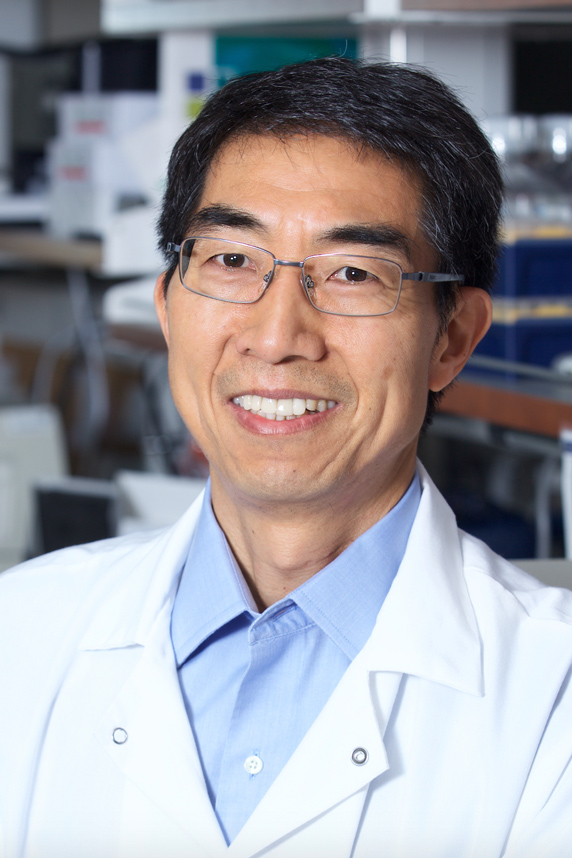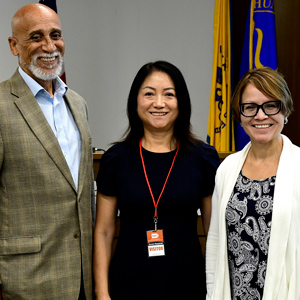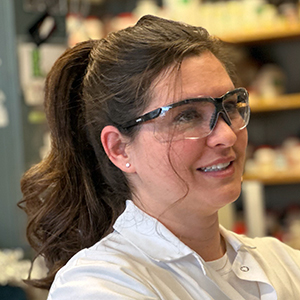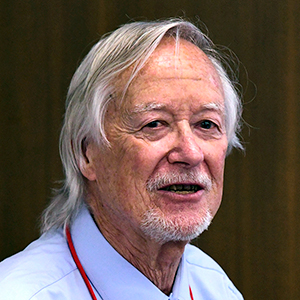The mechanics of cell and tissue growth have always fascinated Kun-Liang Guan, Ph.D., Distinguished Professor in the department of pharmacology and the Moores Cancer Center at the University of California at San Diego (UCSD). His Dec. 14 talk for the NIEHS Distinguished Lecture Series covered a vital tissue regulation topic, “The Hippo Pathway in Cancer.”
“Work in my laboratory over the past 15 years has mainly concentrated on the hippo pathway,” Guan said.
 “Cancer is uncontrolled cell growth, of course, and a lot of cancers have high YAP activity,” said Guan, referring to what scientists call the yes-associated protein, which is a key component of the hippo pathway. (Photo courtesy of Kun-Liang Guan)
“Cancer is uncontrolled cell growth, of course, and a lot of cancers have high YAP activity,” said Guan, referring to what scientists call the yes-associated protein, which is a key component of the hippo pathway. (Photo courtesy of Kun-Liang Guan)A hippo’s work is never done
Cells chemically communicate with, or signal, one another, and signals follow established biological pathways. Links in the signaling process are referred to as either upstream or downstream, depending on where they occur.
First described in 1995, the hippo pathway regulates organ size and is crucial for tissue homeostasis, or wound healing, as well as cell proliferation and apoptosis, which refers to programmed cell death. Guan’s work has helped define the biochemical mechanism of hippo pathway regulation.
“The hippo pathway is how your liver knows to grow to a certain size and then stop,” said Guan. “If you weigh a liver and divide it by whole-body weight, that percentage is very constant. And if you cut it in half, it will grow back to a size and weight similar to the original.”
A growth linchpin
The hippo pathway is also important during embryonic development, when yes-associated protein, or YAP, induces cells in the placenta.
YAP is a key component of the hippo pathway.
“If you make a lot of YAP in a liver, it can grow to four or five times its original size,” said Guan. “When you remove the protein, the organ will return to its normal size.”
The dark side of YAP
As a major downstream link in the hippo signaling chain, YAP is in a crucial position to either keep us healthy or make us sick. When dysregulated, the hippo pathway can also be involved in cancer and other diseases.
“We know that if you make a lot of YAP in the liver and leave it there for a long time, the organ will develop cancer,” Guan said. “Think of cancer as a wound that never heals.”
YAP is elevated in some 45% of human liver cancers, but the mechanisms by which the protein becomes dysregulated are unclear, according to Guan. His lab focuses on identifying upstream factors that may contribute to such dysregulation during disease development.
 “I found out about Dr. Guan’s pioneering work on PubMed while studying the role of this critical pathway,” said Jetten. (Photo courtesy of Steve McCaw / NIEHS)
“I found out about Dr. Guan’s pioneering work on PubMed while studying the role of this critical pathway,” said Jetten. (Photo courtesy of Steve McCaw / NIEHS)Hippos and fruit flies
But what about that name of the pathway?
“As you might suspect, it is actually named after the hippopotamus,” said Guan. “When early fruit fly researchers increased the amount of a certain protein in that pathway, skin cells on the insects would proliferate, taking on folds, almost like a hippo.”
The event was hosted by Anton Jetten, Ph.D., head of the NIEHS Cell Biology Group.
“Dr. Guan has published more than 350 papers, many in high-impact journals,” said Jetten. “He has made many seminal discoveries in biomedical sciences, spanning a wide range of disciplines.”
(John Yewell is a contract writer for the NIEHS Office of Communications and Public Liaison.)









